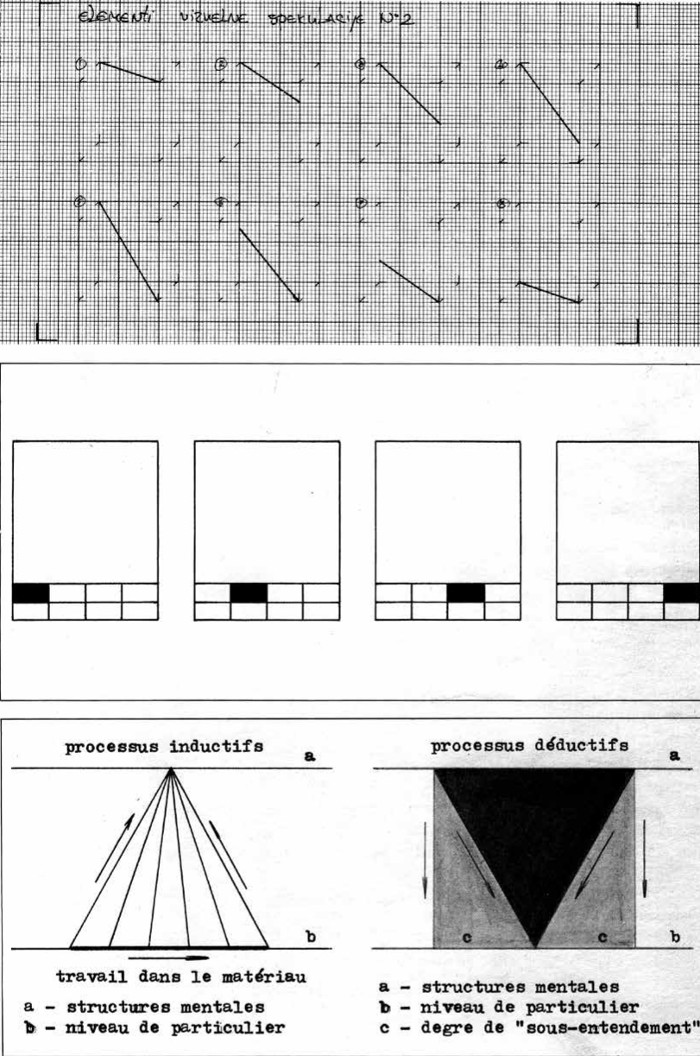Dietmar Unterkofler: Grupa 143: Critical Thinking at the Borders of Conceptual Art, 1975–1980 (2012) [Serbian/English]
Filed under book | Tags: · 1970s, art, art history, conceptual art, film, performance art, photography, serbia, yugoslavia

The late-conceptualist art collective Group 143 was founded in March 1975 by Biljana Tomić in Belgrade as an open educational and theoretical platform at the Student Cultural Centre. Besides Tomić, the other key figures in the group were Miško Šuvaković, Jovan Čekić, Paja Stanković, Neša Paripović, and Maja Savić. The group worked together for five years, producing a broad range of artistic work in the media of photography, film, the artist’s book, diagrams and charts, public lectures, and performance art. Their research was focused primarily on epistemological and theoretical questions about the “art world” in general and the critical potential of intellectualized art-thinking within the conditions of late socialism in Yugoslavia.
The theoretical foundation of their art was shaped by structuralist and post-structuralist French theory, language philosophy, post-constructivism, and British and American conceptual art. Their last public presentation of their work came in August 1980, when Group 143 had a solo exhibition at Galerija Loža in Koper. (Source)
Grupa 143: kritičko mišljenje na granicama konceptualne umetnosti 1975-1980
Publisher Glasnik, Belgrade, 2012
ISBN 9788651915539
393 pages
Wolfgang Ernst: Digital Memory and the Archive (2012)
Filed under book | Tags: · archive, art, communication, computing, culture, data, history, information, internet, knowledge, machine, media, media archeology, media studies, media theory, memory, photography, radio, sound, storage, technology, television, temporality, time

“In the popular imagination, archives are remote, largely obsolete institutions: either antiquated, inevitably dusty libraries or sinister repositories of personal secrets maintained by police states. Yet the archive is now a ubiquitous feature of digital life. Rather than being deleted, e-mails and other computer files are archived. Media software and cloud storage allow for the instantaneous cataloging and preservation of data, from music, photographs, and videos to personal information gathered by social media sites.
In this digital landscape, the archival-oriented media theories of Wolfgang Ernst are particularly relevant. Digital Memory and the Archive, the first English-language collection of the German media theorist’s work, brings together essays that present Ernst’s controversial materialist approach to media theory and history. His insights are central to the emerging field of media archaeology, which uncovers the role of specific technologies and mechanisms, rather than content, in shaping contemporary culture and society.
Ernst’s interrelated ideas on the archive, machine time and microtemporality, and the new regimes of memory offer a new perspective on both current digital culture and the infrastructure of media historical knowledge. For Ernst, different forms of media systems—from library catalogs to sound recordings—have influenced the content and understanding of the archive and other institutions of memory. At the same time, digital archiving has become a contested site that is highly resistant to curation, thus complicating the creation and preservation of cultural memory and history. ”
Edited and with an Introduction by Jussi Parikka
Publisher University of Minnesota Press, 2012
Volume 39 of Electronic Mediations
ISBN 0816677670, 9780816677672
265 pages
Reviews: Liam Cole Young (Reviews in Cultural Theory, 2013), Peter Ward (Information & Culture, 2014).
PDF (updated on 2025-12-9)
For more from Wolfgang Ernst see Monoskop wiki.
Comment (0)Anthony Enns, Shelley Trower (eds.): Vibratory Modernism (2013)
Filed under book | Tags: · art, avant-garde, dada, modernism, occultism, performance, photography, sound, theatre, vorticism

“Vibratory Modernism is a collection of original essays that will enable scholars and students to explore how vibrations provided a means of bridging science and art – two fields that became increasingly separate over the course of the nineteenth and early twentieth centuries. The book demonstrates the vital role played by vibrations in the fields of physics, physiology, spiritualism, and by new vibratory technologies, in helping to shape the way modernist art was made and viewed. The chapters are placed into three connecting parts focusing on literature, the visual arts and theatre, each part highlighting the diverse ways in which writers, artists and performers engaged with the fascinating world of vibrations.”
Publisher Palgrave Macmillan
ISBN 1137027258, 9781137027252
288 pages

